The Launch of “Kars on the Rideau”
Presenters: Coral Lindsay, Ken Swayze. Article by Lucy Martin
October, 2010
Smashing success: “Kars on the Rideau” book launch with Coral Lindsay, Ron Wilson and Archeologist Ken Swazye.
Nearly 200 people connected to the village of Kars filled the RA hall for the October 20th meeting, to share in a fine evening of community spirit. Long rows of tables on both sides of the hall were decked out with displays about Kars and its people from the early 1800’s, to present times. It was great fun to look and learn, as long-time residents shared even more details about a particular house, or recalled relatives and neighbors from old photos.
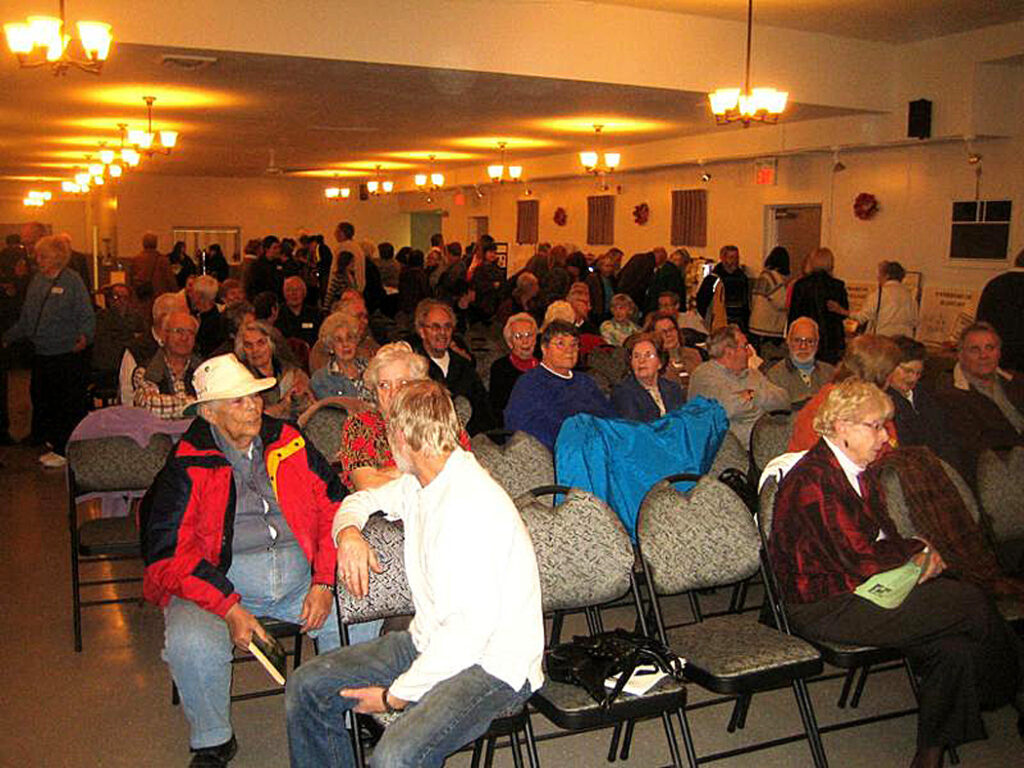

The meeting was led with appropriate enthusiasm by Kars resident and RTHS President Bill Tupper, who thanked the Kars RA for graciously hosting the event.
Author and honoree Coral Lindsay opened the evening with brief remarks and characteristic humor. Lindsay recounted how she and Ron Wilson both grew up on farms in the Manotick area before she married into a founding family of Kars, which took her to a stately stone house and working dairy farm overlooking Lindsay’s wharf. This cemented her connection to the village and its history.
Lindsay expressed her gratitude to all who made her work possible, too many to list here.
The first “Kars on the Rideau” was based on the work of the Kars Women’s Institute and their prize-winning nine volume Tweedsmuir History of Kars. Coral Lindsay authored that initial book back in 1972. Twelve hundred copies were published by the WI, at a cost of $6 each, a substantial financial undertaking at that time. It took three years to sell them all, but eventually that did happen, turning the small, green volumes into collector’s items.
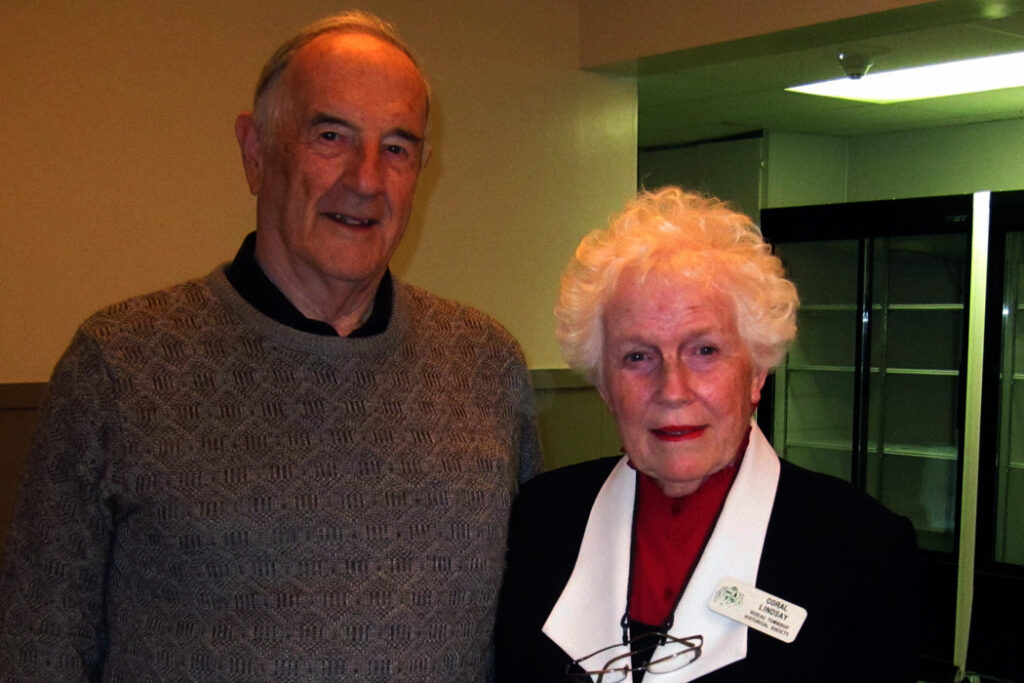
Over the years, Lindsay was encouraged to undertake an updated, second edition. She’s never stopped collecting more scraps of information and photos, but much toil was required to render decades of additional research into revised book form.
The second edition would not exist without herculean editing from the broadly-talented Ron Wilson. Much has changed since the 1970’s, including a preference for submissions on computer files. Text, photos (old and new) and lay-out all had to be digitized. Then came editing, adjustments, and proof-reading. Faithful helpers spend many months assisting with those necessary tasks until, finally, the richly-detailed second edition was done.
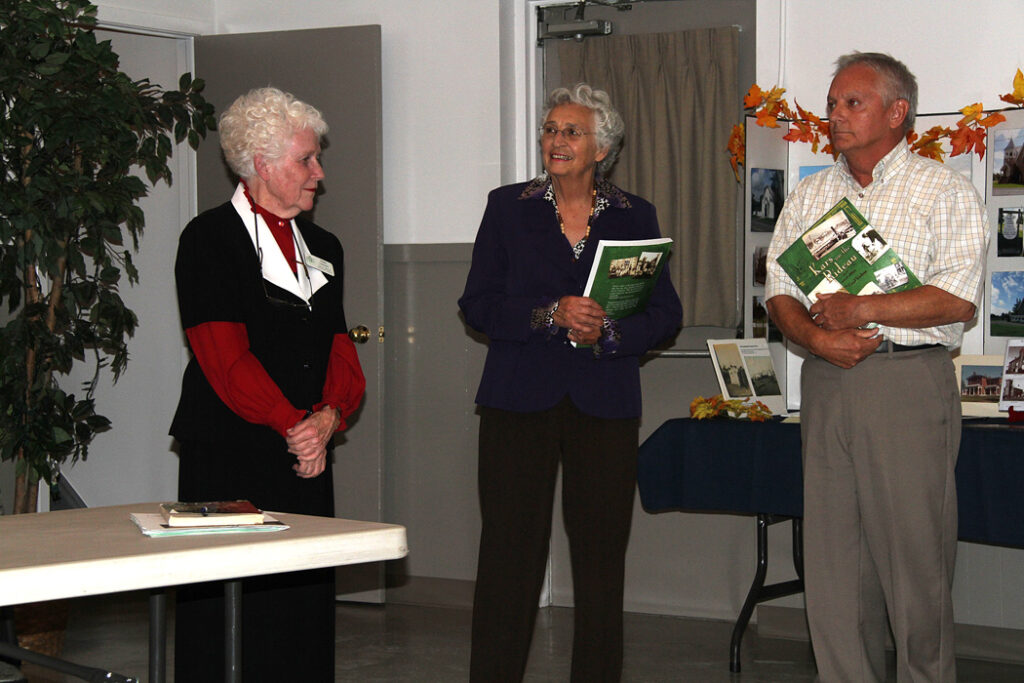
The holder of the original copyright, the Kars Women’s Institute, granted RTHS permission to publish the second edition, and we owe deep thanks to the WI for that essential support. RTHS’s practice is to sell books at cost, to assure funds will be available for future publications. Even with a supplementary grant from Councilor Glenn Brooks, a small press run of this type (211 pages, including over 300 photos and images) came in at slightly under $35 each, with some volumes to be donated to local schools, archives and libraries. Would that no-profit cost seem too expensive? How many could be ordered, without putting the publication fund into distress? It was decided to start with 200 and see how that went.
Well, advance worries melted away as throngs lined up at the October 20th launch to buy copies and get personal inscriptions from Coral and Ron. More than half sold that very night. Within a week the entire press run was gone, with a healthy waiting list awaiting the next printing.
RTHS is making every effort to have more copies available as soon as possible and certainly before Christmas. (Yes, that is an unsubtle shopping hint!) Once additional copies are available, they will be sold at the Kars General Store and the Rideau Archives in North Gower, during their regular Tuesday hours. It is expected it will be sold in a few more locations as well. They will be announced in a later newsletter and on the RTHS web site.
Featured guest speaker Ken Swayze then took the hall on an amazing journey through time.
Before major construction commenced at the Riverwood subdivision (near the corner of Roger Stevens and Rideau Valley Drive North) archeological finds were made that brought Swayze to the scene. Subsequent excavations, conducted between 2006-2008, revealed probable evidence of Early Archaic Indians in that area.
Basically, Swayze found signs of human activity back when Kars was more or less along the Atlantic coast. At that time, the climate and setting was more like modern Labrador, featuring ice cold water and stunted vegetation. The artifacts were found at a depth that prompted Swayze to state these people were “literally older than dirt”, most likely from the early post-glacial age, ten to eleven thousand years ago.
It was stunning to imagine how much change has occurred in natural environments and the level of human adaptability required along the way. (Prior to this discovery, it was believed human habitation in this area dated from 4500 years ago.) Swayze can’t tell if these far-older camps were permanent or temporary – he suspects they were short-term – but the stone tools he collected were foreign to this area.
Have you ever watched a professional read an x-ray, pointing without hesitation to a murky blur, saying it clearly showed a cavity, or a fracture? Well, along those lines, I confess many of the items shown in Swayze’s slides just looked like rocks, to my untrained eye. But archeologists know better and can explain how such tools were made, and why they were vital at that time, even though other organic artifacts, like clothing or anything made from bone, have long since rotted away.
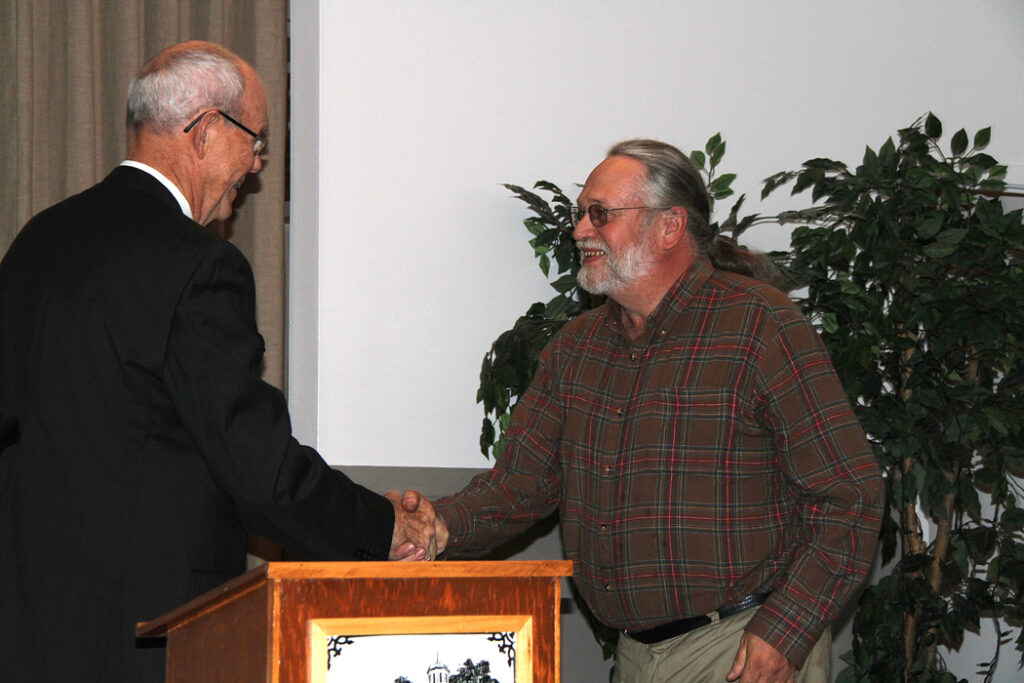

Swayze believes these people would have used some type of boats or canoes and worn fur clothing that was sewn and fitted, using tools of stone, bone or antler. Food would have come from hunting and gathering, including fish, small game and caribou. Evidence of beluga whales, seals and, yes, even mastodons have been found in the Ottawa Valley, all good eating, if found or killed by humans.
Though the discoveries seem crude, Swayze says it would be quite mistaken to assume those tool makers lacked sophistication. Survival would have required specialized knowledge and skills we have lost along the way. Swayze theorizes there must have also been a very different concept of time, citing the fact that many hundreds of hours went into making some tools, an activity that seem excessive to us today. (In the it’s-all-relative department: might making the perfect awl be the post-glacial equivalent of mastering a golf swing or a challenging video game? With social status to match?)
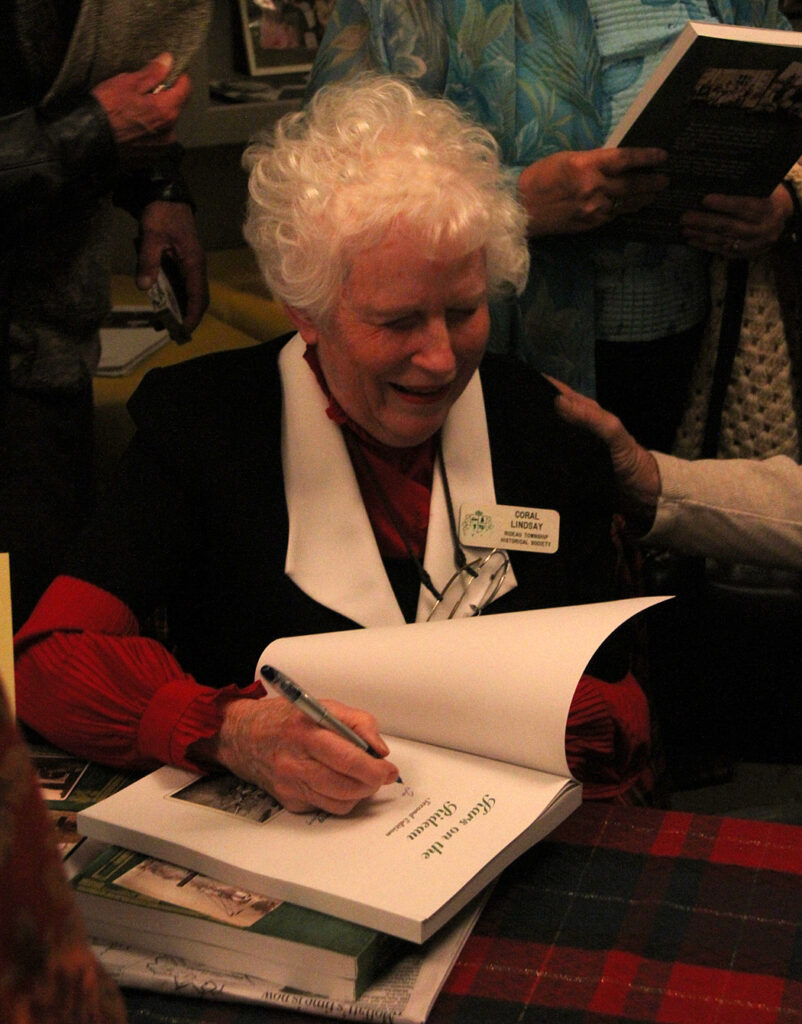

The audience peppered Swayze with questions, as people tried to imagine living here when conditions were so very different. Swayze said the Ottawa Valley has not been the subject of much archeological research and suspects finds like this would be plentiful, if more studies took place. Items he collected have gone to the Algonquins at Golden Lake. Photos and a short summary of this topic can be found on pages 14-17 of “Kars on the Rideau, second edition”. A full copy of Swayze’s work is also available at the Rideau Archives in North Gower.
We thank Coral Lindsay, Ron Wilson and Ken Swayze for truly expanding our knowledge of Kars through the ages.
